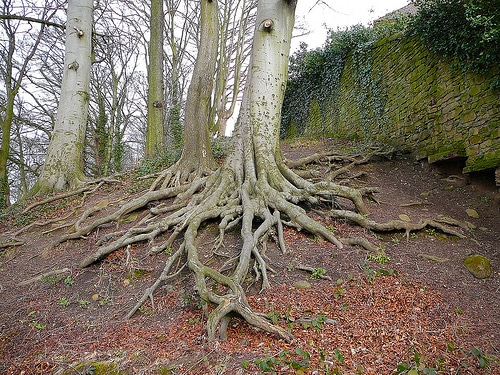This article will cover how to keep roots away from lateral lines. The matter of excess water is also an issue for many homeowners. A well-hydrated property is ideal for lawn maintenance. The moisture in the soil is needed to make the grass look green and the other plants to look alive. Roots take time to establish themselves in a particular area. Once they have that firm grasp of the soil, they make sure that they get the nutrients and water that they need to thrive. As a property owner and plant lover, you are compelled to have a garden in your lovely patch of land. Plants always give the impression that you respect and care for Nature. It also allows you to relax from the tedious workdays or daily squabbles. You know you’re doing something right when you look at your lawn and just simply be proud of how alive each plant is. However, you should make sure that the plants and trees in your property are not lush and green because their roots are accessing your lateral lines. As you know, your septic system collects and treats wastewater that comes from your home. Wastewater is rich with all the nutrients and moisture that plants need to survive and thrive. If they are growing into the lateral lines, then your septic system is in trouble. Your lawn maybe a vision but it could come at a terrible price.
Lateral lines are integral components of your drain field system., which is the second vital part of your septic system. It evenly distributes the pre-treated effluent into the drain field so that the aerobic bacteria and the bio-mat could purify the effluent before it is redistributed into the surrounding environment. One of the goals in this process is to provide potable water to the existing groundwater supply. Roots of hardwood plants are very invasive. Their root systems are very invasive. They tend to get into small cracks and gaps in the system. When they penetrate the pipes, they grow into them, creating a mesh wall that blocks the normal process of wastewater treatment. As a result, the effluent overflows, backs up, and floods you entire property. When this happens, the safety of the groundwater is compromised. You should know how to keep roots away from lateral lines so that wastewater treatment flows smoothly. When it does, you can be sure that you and the other residents in the area will always have safe water to drink and clean spaces to live.
The growth of roots is affected by several factors. The soil used to build your septic system tends to have more nutrients that the fixed soil in your property. It is because of the effluent that the soil accommodates. The water table’s fluctuations are also factors to consider. Dry seasons make the tree roots grow much deeper into the soil, searching for more moisture. When winter comes, the roots look for warm water, which they could easily find in your lateral lines. If you are a homeowner who is given the choice of where the septic tank and lateral lines should be, then you have that rare chance of making sure that the roots will not harm the lateral lines. This also allows you to select the trees and plants that should be planted. You are also given the opportunity to plant these hardwood plants at an ideal distance from your lateral lines. There are trees whose roots grow deep into the ground in search for water and nutrients. Others also have lateral growth patterns that easily cover lateral lines more effectively.
Understanding how to keep roots away from lateral lines is a serious endeavor that you should undertake as a homeowner. Make sure that you consult with an arborist or a septic expert in your area to help you achieve an efficient, fully functional lateral line system. When your lateral lines are optimal, your septic system’s life is prolonged for decades.
